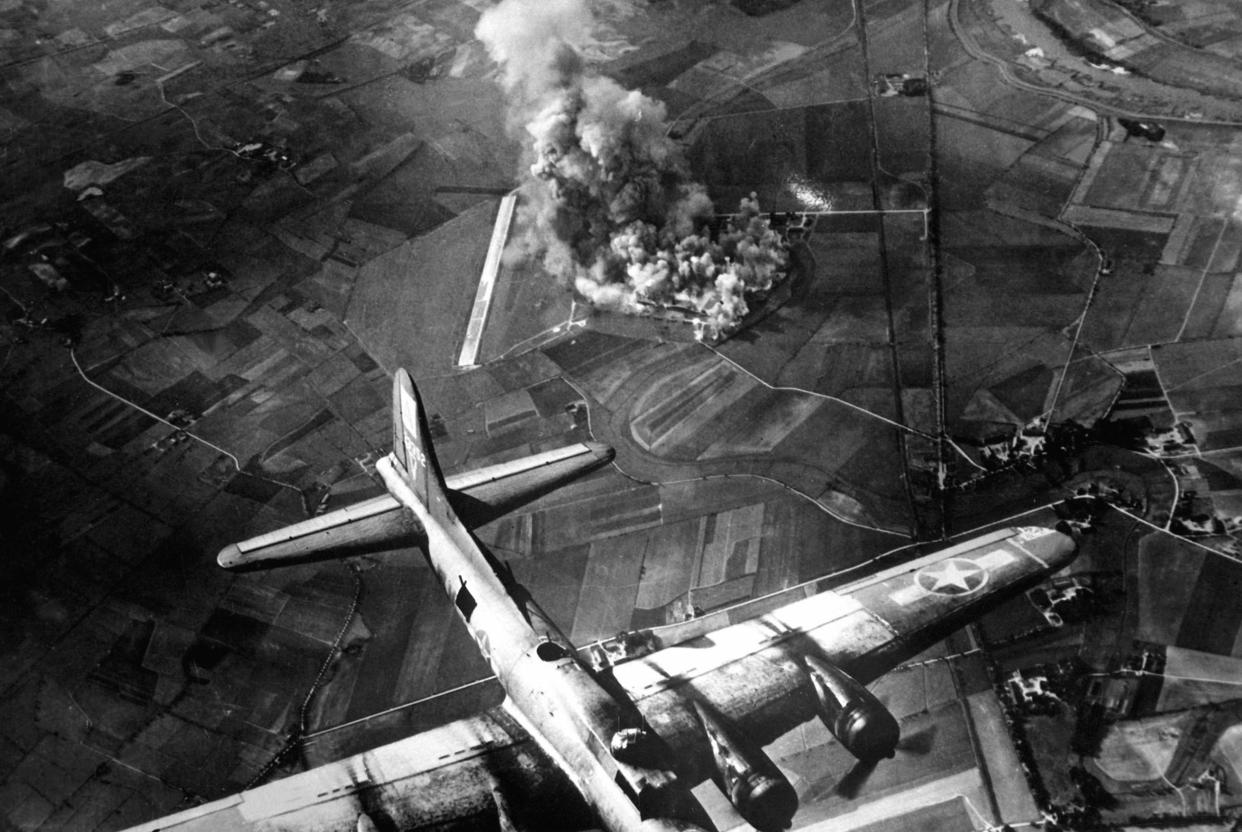Second World War bombing raids sent shockwaves to edge of space, study finds

Second World War bombing raids were so intense they changed the edge of the Earth’s atmosphere, a new study has found.
The violent bombing campaigns had vast and dramatic impacts on the ground below the planes. But they also rose as much as 1,000km up into the sky, changing the very limits of our atmosphere.
The shockwaves produced by the huge bombs weakened the electrified upper atmosphere, known as the ionosphere, the new research from the European Geosciences Union claims.
The findings could help shed light on the mysterious ways that natural events like lightning, volcanic eruptions and earthquakes change the same parts of the atmosphere. The ionosphere is important for modern technologies such as radio communications, GPS systems, radio telescopes and some early warning radar – but the precise way it changes over time is unknown.
“The images of neighbourhoods across Europe reduced to rubble due to wartime air raids are a lasting reminder of the destruction that can be caused by manmade explosions. But the impact of these bombs way up in the Earth’s atmosphere has never been realised until now,” said Chris Scott, professor of space and atmospheric physics.
“It is astonishing to see how the ripples caused by manmade explosions can affect the edge of space. Each raid released the energy of at least 300 lightning strikes. The sheer power involved has allowed us to quantify how events on the Earth’s surface can also affect the ionosphere.”
To conduct the work, researchers looked at contemporary records taken at the Radio Research Centre in Slough. They sent up radio pulses into the sky that allowed them to measure the height and concentration of ionisation in the upper atmosphere.
They found that the electron concentration dropped around the time of large allied bombing raids. The shockwaves from those bombs are thought to have heated the upper ionosphere and caused the loss of ionisation.
That tallies with reports of the strange and dramatic effects that the bombing raids could have on those around them, said experts.
“Aircrew involved in the raids reported having their aircraft damaged by the bomb shockwaves, despite being above the recommended height,” said professor Patrick Major, University of Reading historian and a coauthor of the study.
“Residents under the bombs would routinely recall being thrown through the air by the pressure waves of air mines exploding, and window casements and doors would be blown off their hinges. There were even rumours that wrapping wet towels around the face might save those in shelters from having their lungs collapsed by blast waves, which would leave victims otherwise externally untouched.”
“The unprecedented power of these attacks has proved useful for scientists to gauge the impact such events can have hundreds of kilometres above the Earth, in addition to the devastation they caused on the ground.”

 Yahoo News
Yahoo News 
